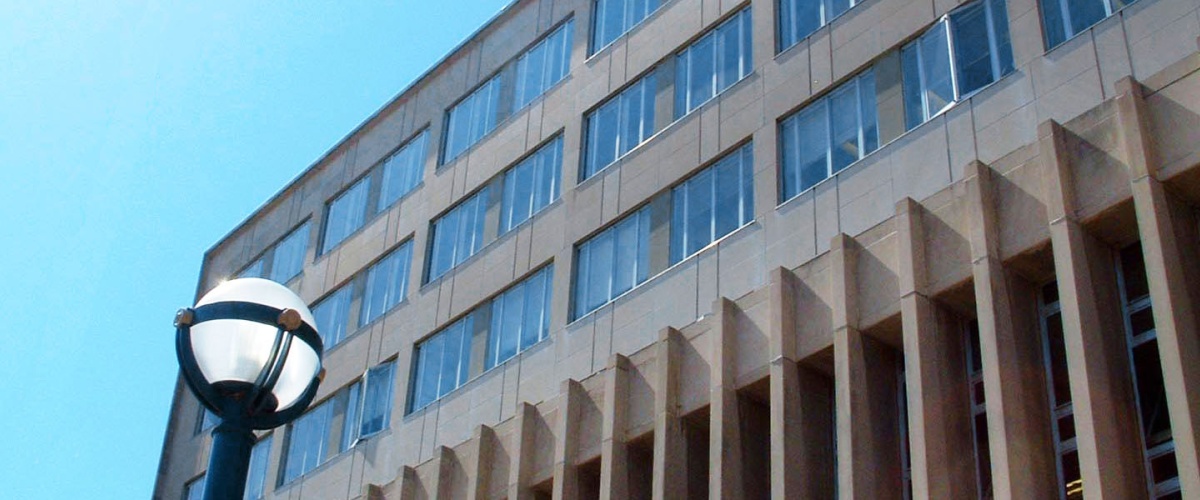
Can we handle the truth?
postedDear Friends and Neighbors
I hope that this note finds you well and finding peace wherever you can. Because of redistricting, I have one year left in my service to the city as the alderperson for District 6. During my remaining service, I must focus my energies on bringing people from different backgrounds together in respect, unity, and when possible, with love; to forge a new, safe, socially just, and equitable Madison. Perhaps, most of you know that we (Madison) are plagued with some of the worse racial disparities in the nation. In this city that wins countless national accolades, could we as a community, ever address the racial disparities within our criminal justice system, police interactions, mental/physical health access, education, employment, income and home ownership? I sincerely believe so, but only if we collectively demand an end to these damning racial inequities. We could start with initiating a Truth and Reconciliation process for the City of Madison.
The purpose of a Truth and Reconciliation (TRP) process is one of "restorative justice," which differs from the customary adversarial and retributive justice. A TRP seeks to heal relations between opposing sides by uncovering all pertinent facts, distinguishing truth from lies, and allowing for acknowledgement, appropriate public mourning, forgiveness and healing. Unless you have been living under a rock for decades, or really don’t care about the prolonged impacts of systemic racism or oppression historically- and presently for Black, Indigenous or other people of color (BIPOC); you might not understand or care about the need for a Truth and Reconciliation process.
More about how a Truth and Reconciliation process could work in Madison later. First, I am reminded of the scene from the famous 1992 movie, A Few Good Men- where Jack Nicholson screams “you can’t handle the truth”. I deeply believe that there are many Madisonians that can, not only handle the “truth”, but would do something about the horrendous disparities within our city if they really understood the plight of countless BIPOC neighbors; and the histories that have left us living in a Tale of Two Cities. If it wasn’t for thirty years of serving those that are historically marginalized, I too might not be aware of the suffering that thousands of Black people living in Madison face daily. Let’s take a look at the past to understand where we are at now.
- City of Madison was incorporated in 1856.
- Madison has been home to Black residents since at least 1839.
- In 1900, Madison’s Black population was 69 people.Most of them were transplanted from Milwaukee or migrated from southern states.This small community was instrumental in welcoming other African Americans who moved to Madison during the period because hotels and most landlords would not house Black people.
- Despite most having formal education and various academic degrees, early Blacks were relegated to domestic, janitorial, maintenance and other menial jobs.
Early African Americans living in Madison faced racial discrimination in all facets of their lives, especially in renting options and home ownership.
It's really hard to see any element of urban planning or urban life that is untouched by a long history of segregation.
- Redlining has its origins in the development of government homeownership programs in the 1930s that offered insured mortgages as a form of aid during the Depression.
- Black neighborhoods were often deemed too risky for investment and were indicated by color-coded maps. Racially restrictive covenants were included in deeds of homes to prevent people of color from moving into predominantly white neighborhoods.
- Some old timers might remember Carson Gulley (there is a dining commons named after him at the UW-Madison).Black celebrity chef Carson Gulley and his wife faced multiple and persistent instances of housing discrimination in Madison between the 1930s and the 1950s, finally being able to purchase land to build a home in the Crestwood development in 1953 after a contentious housing co-operative meeting to remove the restrictive covenant from the deed.
- Zoning and restrictive covenants worked together in Madison in the 1920s and 1930s,when realtors were looking at how essentially to develop the west side as exclusive, often restricted suburbs, and how essentially to concentrate noxious things like industry, and keep it on the east side.
- We get the pattern where the most contaminated, unsafe and essentially restricted or boxed-in areas … also became areas ... where essentially you have some of the most marginalized people in Madison living.
- In the mid-20th century, Madison did not prevent the destruction of the ethnically diverse Greenbush neighborhood in south Madison in a quest for “urban renewal”; and a 1963 Capital Times headline declared “Beld Street Area Decays Under Absentee Ownership- Owners Strangling Negro Ghetto”. Imagine these words being used now!
- According to 1960 census information, a Black wage earner in Madison made $2,339 per year, compared to $4,220 for white earners; and these disturbing trends continue to this day……
- In 2019, the ratio of the annual household income of the top 20% to the bottom 20% of households in Madison is 4.8 to 1
- 3.6% of the white population experiencing income poverty, in contrast to 22.8% of the Black population
- 2019, although Black residents make up 5.5% of the Dane County population, 45.9% of the individuals incarcerated in the Dane County Jail are Black
- 2021 report by the JFA Institute, “about 10% of all Blacks are arrested at least once a year in Dane County as opposed to 1% for all other racial and ethnic groups
- Madison has disparities in the rate of health insurance coverage by race and ethnicity, with 2.6 percent of white residents being uninsured, as compared to 9.3 percent of Black Madisonians
- In 2011, Department of Public Instruction data showed that Madison’s black students were significantly less likely to graduate high school on time (49.9%) than African Americans living elsewhere in the state (63%).
In 2019, 10.4% of Black students scored proficient or advanced in math, compared to 60.6% of white students. In social studies, 13.2% of Black students scored in one of the top two categories in 2018-19, with 67.7% of their white peers doing the same.
As I write to you today, it is not easy to find current data on all the racial disparities in Madison but I hope that you get the sad picture. I am cognizant that the odds are exponentially greater (like being hit by lightning twice) that I, as a Black man, would be locked up in the Dane County jail rather than serve as an alderperson for the city of Madison. Also, as a BIPOC person, I sit with the reality that I suffer micro aggressions each time I sit to ponder these bleak realities.
Back to the Truth and Reconciliation process:
- The truth and reconciliation concept, used extensively in Africa and Latin America, has developed into an effective global strategy for dealing with war crimes and other human rights abuses.
- More than 40 countries have used them in the aftermath of a major rupture — the fall of a dictatorship, a civil war, a genocide. Perhaps the world’s most well-known truth and reconciliation commission (TRC), established in South Africa in 1995, held hearings with victims and perpetrators of apartheid, a system of institutionalized racism against Black and brown nationals under the post-colonial Afrikaner government.
- More recently in Canada, because of the massive lawsuit it faced, the government was almost forced to focus on the Indian Residential Schools, and it set up a Truth and Reconciliation Commission (TRC) in 2008 to address those issues.
- Other truth and reconciliation commissions have convened in the United States at the local and state level, most notably in Greensboro, North Carolina, which investigated the November 1979 massacre of anti-Ku Klux Klan protesters by Klansmen and Nazis; and in Maine, which exposed the disproportionate removal of Indigenous Wabanaki children from their homes. Other truth-seeking initiatives have cropped up from Alaska to New York City to Iowa to confront racism and other abuses. In 2021, Sen. Cory Booker (D-NJ) and Rep. Barbara Lee (D-CA) introduced legislation to form a Truth, Racial Healing, and Transformation Commission to look at the effects of slavery and institutional racism in America.
- In October 2020, the Minneapolis City Council approved a resolution establishing a truth and reconciliation process for the City of Minneapolis. The ultimate objective of this process is to begin implementing specific solutions to specific harms that created and perpetuate racial disparities with a prioritized focus on healing with historically Black American descendants of slavery and American Indian/Indigenous communities. https://www2.minneapolismn.gov/government/departments/coordinator/race-equity/what-we-do/ongoing-work/truth-reconciliation/
- District Attorneys in Boston, San Francisco and Philadelphia have come together to create Truth, Justice and Reconciliation Commissions. https://www.tjrc.org/
To give you an idea in what a local TRP might look like, I am including some language from the draft resolution for your consideration.
NOW, THEREFORE, BE IT RESOLVED that the City of Madison establishes a Truth and Reconciliation Implementation Workgroup] chosen by the City of Madison Equal Opportunities Commission to research and make recommendations on how to create a truth and reconciliation process for Madison that engages Black residents and organizations in a citywide effort to address and repair the harms perpetuated on Black individuals and communities.
BE IT FURTHER RESOLVED that the Workgroup will be staffed by the Department of Civil Rights and include key stakeholders representing Black community members and organizations that serve Black communities.
• Meet at least bi/monthly
• Design and facilitate the implementation of a Truth and Reconciliation Process.
• Host a community forum/s to allow opportunities for Black residents to voice their grievances around past injustices within the City of Madison.
• Facilitate a community forum/s with expert presenter/s on reconciliation and healing.
• Draft a report to submit to the City of Madison’s Equal Opportunities Commission and then introduced to the Madison Common Council detailing policy recommendations that the City of Madison could implement to address past wrongs.
Essentially, our Equal Opportunities Commission would seek and appoint key stakeholders and individuals that serve Madison’s Black community. These stakeholders or Implementation Group would have ownership in creating a TRP for the City of Madison. This Implementation Group will create opportunities to allow for healing from past injustices, and bring the larger community together to educate, advocate and offer a report detailing the Implementation Groups’ findings and recommendations. If you are moved and troubled about inequities within Madison and want to help, please consider supporting this effort.
Tomorrow, April 14th at 5pm., please consider registering in support of agenda item 3. 66268 Truth and Reconciliation Process Proposal. https://www.cityofmadison.com/city-hall/committees/equal-opportunities-commission/4-14-2022
More importantly, I must ask from my heart that we all pause to honestly reflect on the racial disparities that fester in our midst. I am imploring you all to not be paralyzed by guilt or feel defensive- but to entertain the notion of “paying for the sins of our fathers”, and if we currently benefit or have privileges because of these sins. I have said it many times, but I believe that self-reflection is one of the hardest tasks that we can do as humans. If we can handle the truth, we must act now to make Madison a visionary city committed to social justice. Together-we can make a difference!
Selected Sources:
